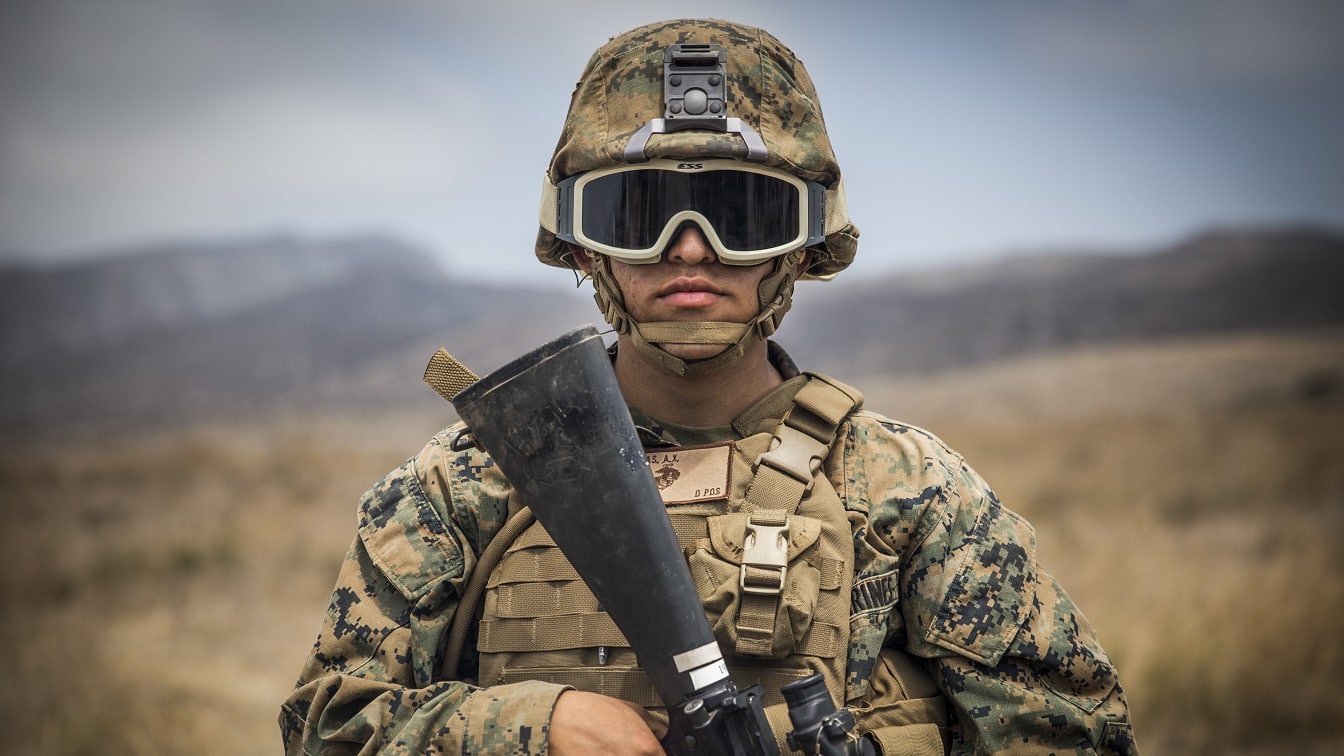Marine Expeditionary Force: The Top of the Spear? When it comes to putting boots on the ground, the U.S. Marine Corps is almost always the top choice of the Pentagon.
As an amphibious organization with expeditionary capabilities ingrained in its DNA, the Marine Corps can deploy anywhere in the world. It has land, desert, arctic, and amphibious capabilities and organic air assets to support operations. At the tip of the spear is the Marine Expeditionary Force (MEU).
The Main Marine Fighting Force
MEUEX, a large-scale exercise that took place in December, showcased the lethality of the main Marine fighting force.
Centered around the 31st Marine Expeditionary Force and with more than 2,200 Marines and Sailors participating, MEUEX is one of the largest training events in the Marine Corps’ calendar.
“The MEU conducts MEUEX after compositing as a MAGTF [Marine Air-Ground Task Force]. It’s where we amass our forces, perfect our skills across the warfighting functions, mutually improve tactical skills and project our combat power. It’s truly motivating to see our Marines and sailors operating as a lethal force,” Sergeant Major Joshua Smith, the 31st MEU’s senior enlisted noncommissioned officer, said in a press release.
Some of the tasks rehearsed included tactical recovery of aircraft and personnel, embassy reinforcement, foreign humanitarian assistance, non-combatant evacuations, direct action, reconnaissance and surveillance operations, forward arming and refueling point operations, crisis response, and mass casualty evacuation.
“MEUEX provides us the opportunity to sustain and re-validate our readiness to deploy at a moment’s notice to crises and contingencies throughout the Indo-Pacific. Whether we find ourselves responding to a humanitarian disaster, non-combatant evacuation, or other crises, the 31st MEU is equipped to integrate and operate across the competition continuums and in all domains. MEUEX confirmed the 31st MEU remains ready to be the first on the scene, the first to help, and if need be, the first to fight,” Colonel Michael Nakonieczny, the commanding officer of the 31st MEU, stated.
At heart, the MEU is a response force designed to react to contingencies anywhere around the world. When they embark on a six-month deployment, the Marines don’t know where they will end. A development in a far-off country might trigger a crisis, necessitating the use of the MEU. So, the Marines have to be ready for literally anything, something that requires inherent flexibility and “can-do” mindset.
Concepts for the Next War
This wasn’t a normal exercise. For the first time ever, the MEUEX include Forward Arming and Refueling Point (FARP) operations, which are designed to quickly refuel and rearm aircraft.
“The forward arming and refueling point (FARP) operations we executed over MEUEX extended the time on station for the attack helicopters escorting the assault support aircraft in the Helicopter Raid by allowing them to refuel closer to the fight. This is the first time we’ve executed a FARP over MEUEX and demonstrated that we are able to persist and operate within a tactical environment,” 1st Lieutenant William M. Martin, the FARP mission commander with Marine Air Control Group 18 Detachment, said.
During the training event, the Marines also got to test the Expeditionary Advanced Base Operations and Distributed Maritime Operations concepts, which, alongside FARP operations, would be important in a potential war with China in the Indo-Pacific area of operations.
The Marine Corp’s F-35B fighter jets are the ideal aircraft for these concepts as they can operate from almost anywhere with the right logistical support.
1945’s New Defense and National Security Columnist, Stavros Atlamazoglou is a defense journalist specializing in special operations, a Hellenic Army veteran (national service with the 575th Marine Battalion and Army HQ), and a Johns Hopkins University graduate.

